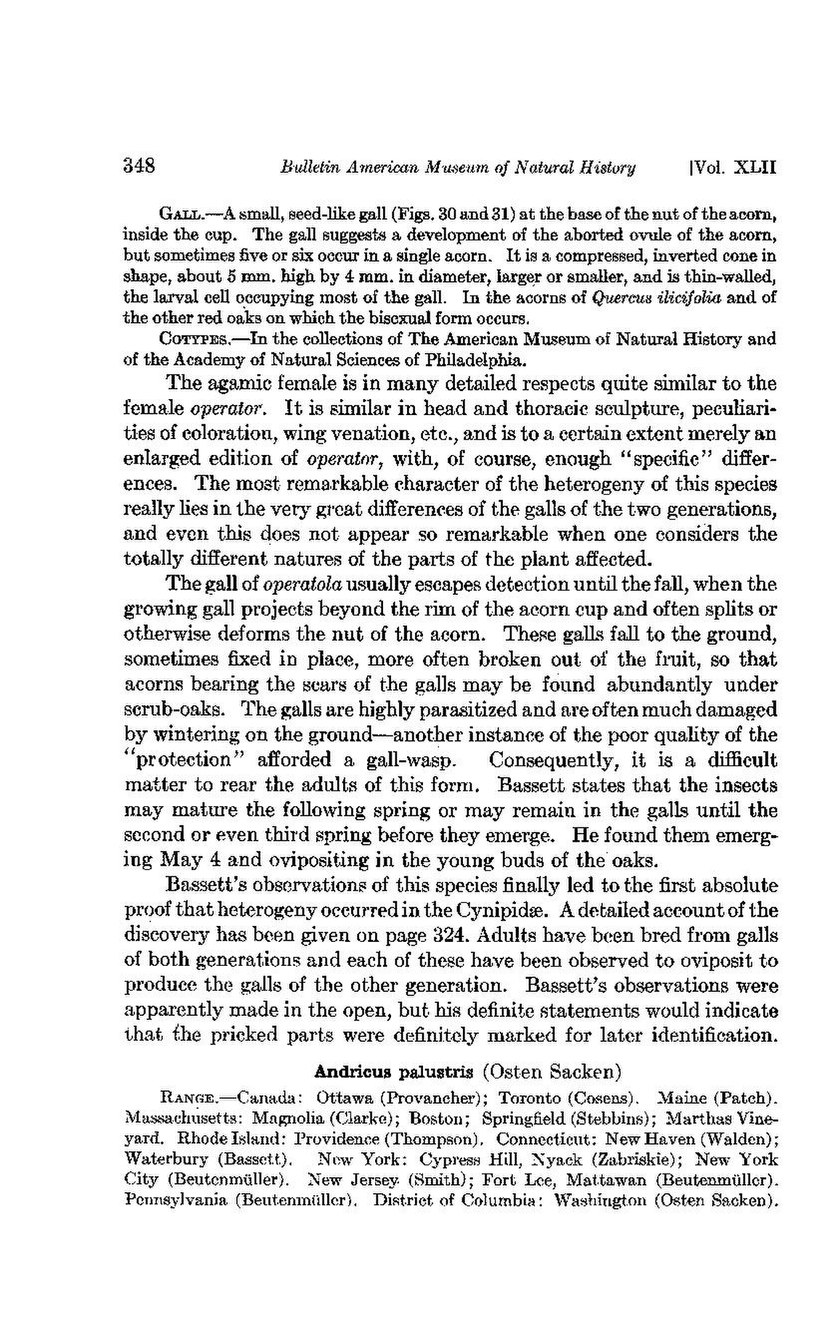Gall.—A small, seed-like gall (Figs. 30 and 31) at the base of the nut of the acorn, inside the cup. The gall suggests a development of the aborted ovule of the acorn, but sometimes five or six occur in a single acorn. It is a compressed, inverted cone in shape, about 5 mm. high by 4 mm. in diameter, larger or smaller, and is thin-walled, the larval cell occupying most of the gall. In the acorns of Quercus ilicifolia and of the other red oaks on which the bisexual form occurs.
Cotypes.—In the collections of The American Museum of Natural History and of the Academy of Natural Sciences of Philadelphia.
The agamic female is in many detailed respects quite similar to the female operator. It is similar in head and thoracic sculpture, peculiarities of coloration, wing venation, etc., and is to a certain extent merely an enlarged edition of operator, with, of course, enough “specific” differences. The most remarkable character of the heterogeny of this species really lies in the very grcat differences of the galls of the two generations, and even this does not appear so remarkable when one considers the totally different natures of the parts of the plant affected.
The gall of operatola usually escapes detection until the fall, when the growing gall projects beyond the rim of the acorn cup and often splits or otherwise deforms the nut of the acorn. These galls fall to the ground, sometimes fixed in place, more often broken out of the fruit, so that acorns bearing the scars of the galls may be found abundantly under scrub-oaks. The galls are highly parasitized and are often much damaged by wintering on the ground—another instance of the poor quality of the “protection” afforded a gall-wasp. Consequently, it is a difficult matter to rear the adults of this form. Bassett states that the insects may mature the following spring or may remain in the galls until the second or even third spring before they emerge. He found them emerging May 4 and ovipositing in the young buds of the oaks.
Bassett's observations of this species finally led to the first absolute proof that heterogeny occurred in the Cynipidæ. A detailed account of the discovery has been given on page 324. Adults have been bred from galls of both generations and each of these have been observed to oviposit to produce the galls of the other generation. Bassett's observations were apparently made in the open, but his definite statements would indicate that {he pricked parts were definitely marked for later identification.
Andricus palustris (Osten Sacken)
